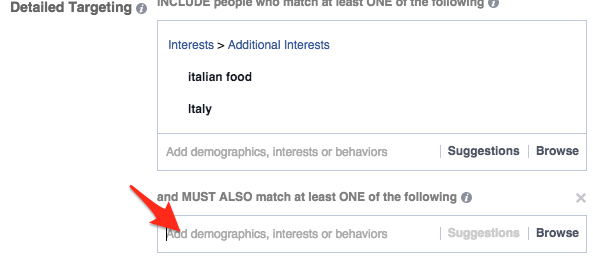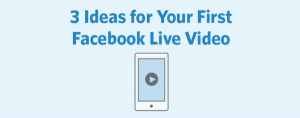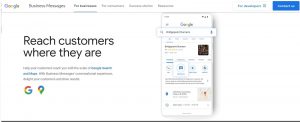Facebook advertising is one of the most effective marketing strategies at your disposal. It’s also one of the most intimidating advertising channels for newcomers. With almost as many ways to target relevant audiences as there are ways to use Facebook in general, figuring out precisely what strategy to adopt can be a challenge for those new to paid social.

Although there are some tried-and-true Facebook advertising strategies that offer solid returns, it’s a tough market. Thousands of businesses are advertising on Facebook, and even taking the platform’s excellent audience segmentation into account, it’s a jungle out there – which is why you need to think about unorthodox strategies that will give your campaigns the edge.
In today’s post, we’ll be taking a look at three unconventional Facebook advertising strategies that you can implement in your own campaigns. By the time you’re done reading this post, you’ll be ready to test these actionable strategies with your own creative, so let’s get started.
1. Use the Universal Tracking Pixel to Create Highly Exclusionary Audiences
Facebook’s tracking pixel is most commonly used for conversion tracking and bid optimization. However, while this is a perfectly good use of this feature, you can actually make Facebook’s tracking pixel work harder for you by using it to create highly exclusionary audiences.
![]()
This technique is particularly effective because it not only makes your campaigns more accurate, but can also save you a lot of time and tedious work. Brett McHale, WordStream’s resident paid social expert, regularly uses this strategy to save himself time and ensure his campaigns are laser-focused on audiences that align with our goals.
“The universal tracking pixel allows you to seamlessly remarket to individuals who visit pages on which you have it implemented,” Brett explains. “There are, however, a few layers of complexity that the average user may not immediately be aware of. When you’re running your ads, your greatest ally is visibility. It helps to know who you’re targeting, but to could be equally as valuable to know who you are excluding.”
By using Facebook’s tracking pixel to build exclusionary audiences, Brett saves himself tons of time and effort while targeting users that exhibit highly specific behaviors that demonstrate strong commercial intent.

“I strategically use the universal pixel to build dynamic exclusionary audiences and take away the pain of constantly uploading Excel spreadsheets of emails that might not even be a direct match,” Brett says. “If you take the approach of excluding current customers, you can create a custom audience of visitors to your site who visit either a log-in page, or perhaps even a confirmation landing page URL. This will ultimately save you money.”
This technique also allows you to customize and refine your campaigns to be much more individualized, depending on where the prospect is in the sales process.
“You essentially construct a funnel by targeting users with different interest or readiness levels with specified promotions,” Brett explains. “This allows you to tailor promotions on a more individual basis and create ultimately a more relevant ad experience while moving prospects down the funnel.”
If you’re using Facebook’s tracking pixel for conversion tracking, that’s great – but as Brett can attest, it’s a great deal more useful than that, so consider trying this technique in your next campaign.
2. Combine Niche Interest Targeting with Common User Behaviors
One of Facebook’s greatest strengths as an ad platform is the ability to target users based on their interests and online behavior. Although many advertisers target users based on the things they’re interested in and the things they do online, combining these two targeting strategies is an often-overlooked technique that can yield amazing results.

A common mistake that some advertisers make is assuming that their target audience is much larger than it actually is – remember, “everyone” is not a target market. By making this assumption, they often cast their proverbial net far too widely, which results in weakened targeting and ad messaging that’s far too broad. That said, you don’t want to restrict yourself too narrowly to specific niche interest groups, which is why combining highly specific interest targeting with common user behaviors can help you target prospects who are interested in your services or industry, and exhibit behaviors that indicate strong commercial intent.
This technique works both ways. You can either target niche interests and common behaviors, or target users who share broad interests and exhibit highly specific behaviors. For example, you could create a target audience of users who own small businesses – a very broad audience – but who are also interested in digital marketing conferences, have expressed an interest in free software trials, or have downloaded certain types of content.
3. Optimize Your Forms to Target High-Quality Leads
Even if you’ve been advertising on Facebook for a while, the chances are pretty good that no matter how granularly you’re targeting your ideal audience, you’re still wasting clicks and impressions on users who aren’t likely to convert. Our next unconventional Facebook advertising strategy is to use tracking pixels on your forms to help Facebook “learn” which of your leads are the most valuable.

To accomplish this, you can implement a pixel into your forms that fires when users enter certain details about themselves. If you’re using form data to qualify leads, you’re probably using some sort of metric to determine their worth as leads, such as monthly spend on, say, AdWords. You can use this data to create increasingly refined lists of leads, which you can then target later.
Let’s say that, in order to qualify as a viable lead, a user has to spend more than $ 1,000 on AdWords. If a user enters a figure greater than $ 1,000 into the “Monthly AdWords Spend” qualifying field in your form, you can specify that the pixel “fires” and tells Facebook that this user is a qualified lead based on their ad spend and the ad set that drove them to convert. This allows you to tailor and refine your copy and creative within the ad sets that are driving the highest-quality leads based on your qualifying data. In turn, this frees you from focusing on CPA as a determining metric of success and spend more on campaigns that are driving higher quality leads.
After a while, when you’ve accumulated more data, you can create custom audiences of these leads using the “Event” selection. From there, you can create lookalike, exclusionary, and remarketing audiences based on these criteria, depending on the needs of your campaigns.
Hopefully these strategies have given you some other ideas of how you can use Facebook’s sophisticated advertising tools to better target more qualified users and make your advertising budget go further.
Digital & Social Articles on Business 2 Community(74)





